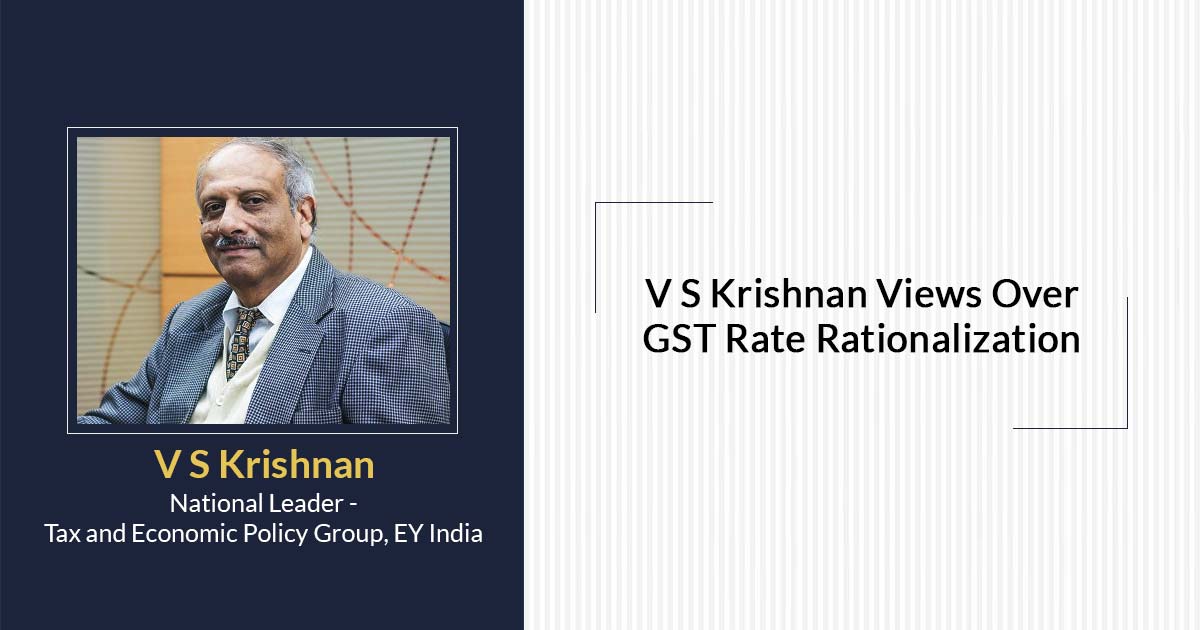
The government, through the approval of GST officials, made a group of ministers beneath the leadership of the Karnataka chief minister so as to build the recommendations upon the GST rate rationalization. The motive behind this is to make a balance between GST revenue collection with respect to industrial competition effectiveness.
The effective GST design is made to ensure that the whole value chain via raw material to retail is drawn beneath the GST net. This pointed out that there is no increasing effect of tax on the taxation part and there shall be only a value addition that comes beneath the tax. The design needs that there will be no privilege as this breaks the chain of the taxes and makes the issue of embedded taxes in different concerns in the value chain, the surge in costs. The essentials about phasing out privileges are accepted; there are no notifications about the awareness of the lower rates of the duty that causes a framework of the inverted duty and collection of the ITC at distinct positions in the value chain.
GST paying inputs is thus essential to understand. Input can be divided into 3 parts. The capital goods are thus essential for the taxes and thus can make the collection of the credits if the output goods do not tax in the effective way towards which it can be ward off the former taxes. Hence to draw the new investments as seen in the productivity attached incentive (PLI) policy to enhance the manufacturing of the output, the GST rate towards the manufacturing sector should approach the standard rate.
Towards setting out the GST rate this might be relevant to integrate the 12% and 18% GST rates towards the prescribed 16% and not surge in the rates from 18 to 20 per cent which was formerly discussed. It indeed draws down the GST rate on the services and diminishes the pressure of inflation. A rationalized rate would also be required to fill the gap between standard rate and merit rate. This can be hiked from 5 % to 8%.
The current scenario with respect to the reduced GST rate by numerous manufacturing industries is totally driven for reduced tax on input goods while pass over the effective taxes that are involved in input service and capital goods. Capital goods are just essential towards the important guidelines for the installation of pollution control equipment.
A low GST rate shall indeed create an issue towards the manufacturing portion urging to claim the advantages of PLI policy in which effective investments shall be taxed on the capital equipment towards which warding off needs lower GST rates for output. The extending chain of the manufacturing units including input services such as design, intellectual property rights, financial services, and others are essential.
The manufacturing sector is giving importance to lowering the GST rate but not seeing these rates from an expansion and improvement perspective.
Due to problems in the data, the total input taxes shall not be simply divided into 3 parts. From the proxy assumption, the same can take place. The major thing is that effective investments are induced in manufacturing, due to obtaining tax credits the GST rates shall not be reduced and this shall raise the cost of the project and disincentivize investors.
Moreover to an effective GST framework, a manufacturing rise needs a low import tariff that undergoes significant raw materials and capital equipment which is not manufactured in India. The same costs from now are aggregated ranging from 15 to 18 per cent which is higher and creates an issue in the manufacturing sector.
In the current covid issues even holding out the excellent domestic vaccine industry, the production relies on the import of the significant raw materials such as filter bags from the united states. Full-fledged self-sufficiency is not easy and needs to be limited to some significant factor as PLI policy seeks.
It is not required to specify that the tax scheme is not only the single option that affects the decision related to investments. To build an effective and friendly ecosystem to enhance the growth one is required to amend the factor markets that consist of land, labour, and energy. Towards the discussion about the GST rate, Rate finalization needs to view the supply chain as a whole.
The reason why GST rate fixation poses a strong reaction is that there are unbalanced data between the government, on side trade, and on the other side of Industry. It is thus essential to share the information in public with all the stakeholders through the related concerns. Communication is important.
Reforms are urged on the grounds of widespread consultation and debate. It is vital towards the concern of economic reforms in which the problems are tough through both the advantages and disadvantages and then the outcome will be there. It is tough to elaborate on the complete benefits of the results.
Note: The views of V S Krishnan are totally personal and the audience will have to refer to his words on a serious level.